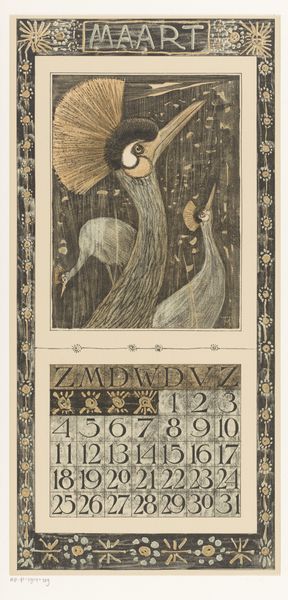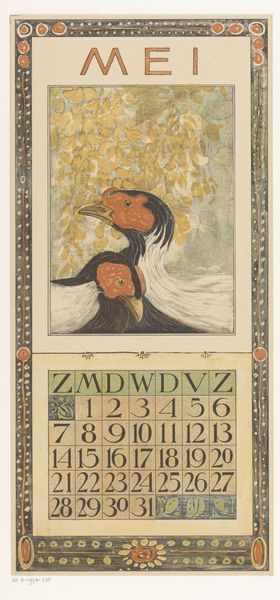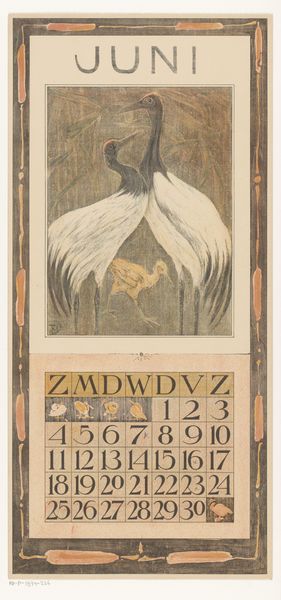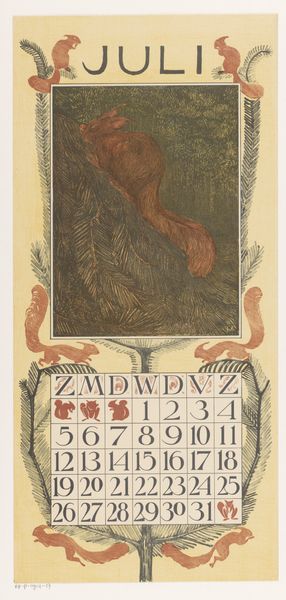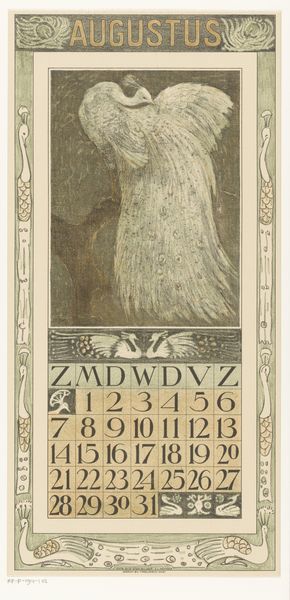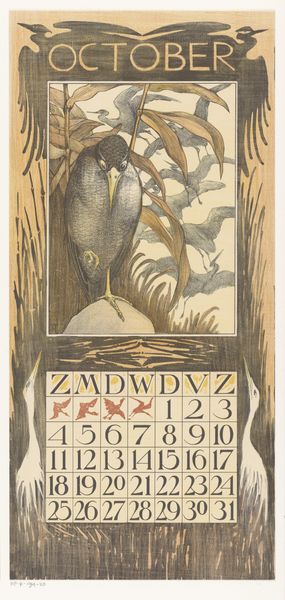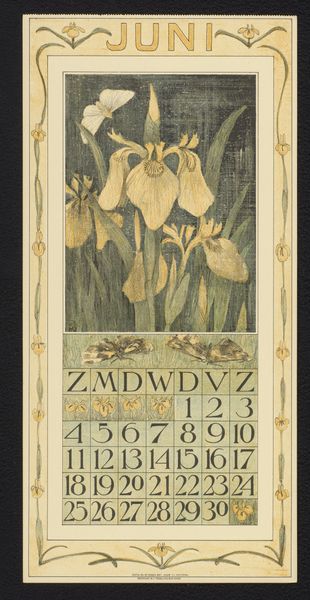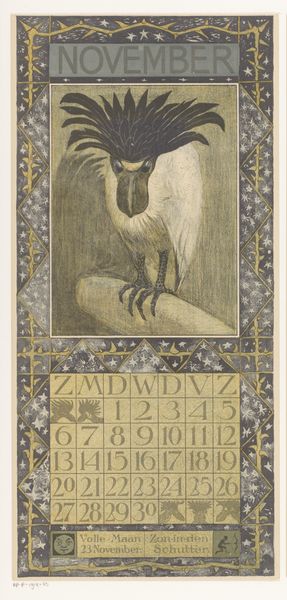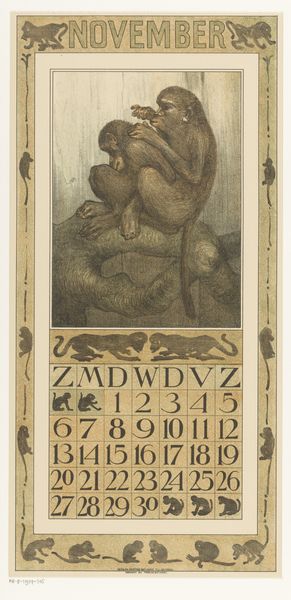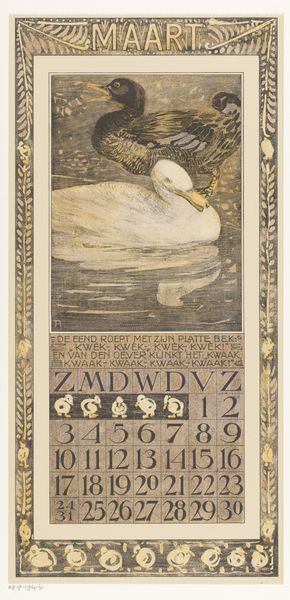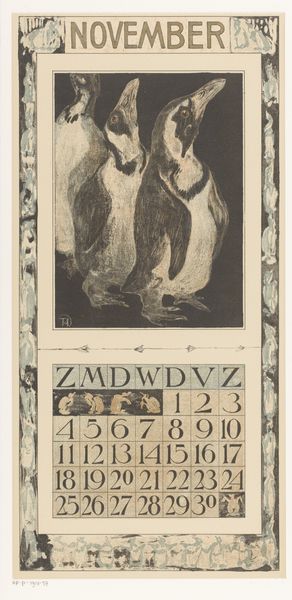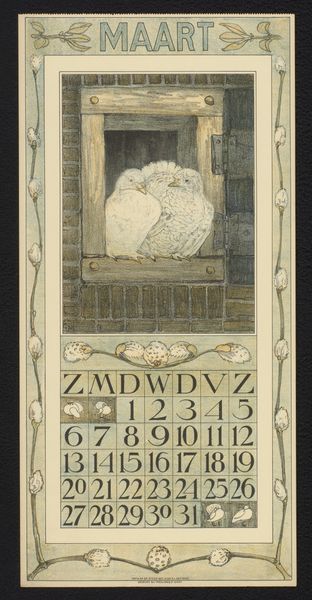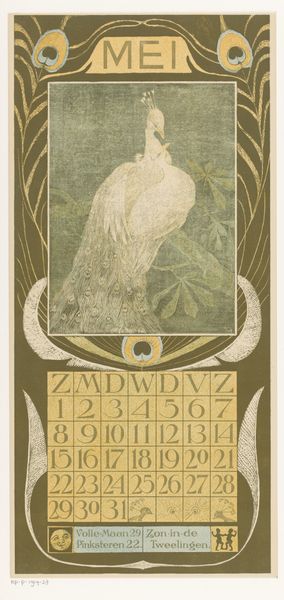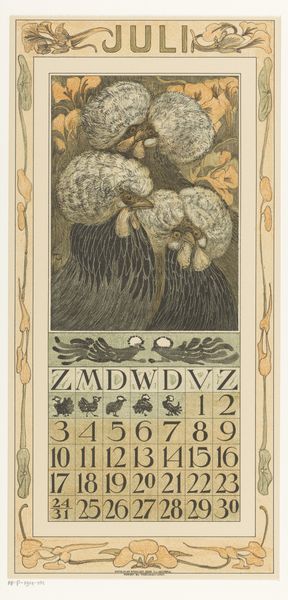
Dimensions: height 450 mm, width 210 mm
Copyright: Rijks Museum: Open Domain
Curator: This is Theo van Hoytema's "Kalenderblad maart met twee hanen" or "March Calendar Sheet with Two Roosters", created in 1904. You can see it here at the Rijksmuseum. What are your initial thoughts? Editor: The composition strikes me first—the dominant, somewhat menacing presence of the roosters looms over the very regimented calendar grid below. It’s an intriguing tension between the natural world and human organization. Curator: I agree. Considering Hoytema's background as a lithographer, it’s vital to explore how the print medium impacted this particular artwork and others in the same vein. Mass reproduction and distribution undoubtedly made his nature-inspired Art Nouveau style accessible to a wider audience. Editor: Absolutely. But let’s not ignore the powerful symbolism! The two roosters, with their vibrant plumage and fierce gazes, could represent themes of virility, dominance, perhaps even the impending arrival of spring after the long winter. Look closely at the subtle application of watercolor washes; how would you characterize that effect? Curator: Very nuanced, giving warmth to the whole calendar. The choice to combine illustration with a functional calendar served a commercial need: Hoytema created art for a very clear social function. What does it reveal about cultural attitudes towards nature at the time, given increasing urbanization and industrialisation? Editor: That’s a valid point. I observe how the carefully rendered borders and typography create an enclosed space, framing and aestheticizing the wildness of nature. It seems to almost be a symbolic capture, wouldn't you say? A visualization of man controlling his natural environment through art. Curator: Precisely. And by reproducing this artwork, it brought elements of nature and notions of artistic sophistication into the homes of everyday consumers, reflecting the democratizing ideals of the Art Nouveau movement itself. The production is very significant. Editor: Thinking about it now, the work as a calendar takes on new significance. A simple organizational tool, it seems, now possesses far greater expressive force, reflecting perhaps our persistent negotiation with both time and nature. Curator: Yes, it's all these things considered, process, context, medium. That makes it the enduring artwork that it is. Editor: A fascinating interplay of form, content and materiality that lingers in the mind long after you’ve noted the date.
Comments
No comments
Be the first to comment and join the conversation on the ultimate creative platform.
